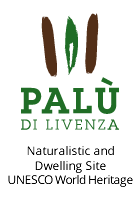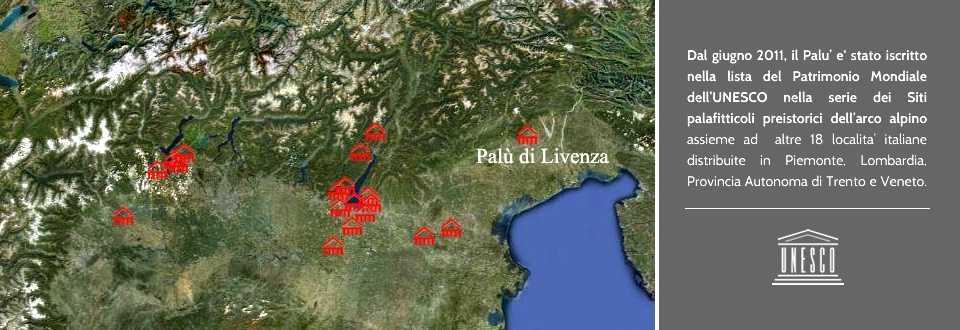Palù di Livenza, between Caneva and Polcenigo
The Palu di Livenza is situated in a large natural basin, in between of Caneva and Polcenigo in the Province of Pordenone: this is an area of great value from the point of view of nature, characterized by the peculiar geomorphology, the abundant presence of water due to the two sources of the river Livenza and the richness of its flora and fauna.
 The archaeological importance , already known in the first half of the nineteenth century , was recognized only since 1965 , when a drainage canal was excavated in the center of the basin and allowed to collect numerous prehistoric materials.
The archaeological importance , already known in the first half of the nineteenth century , was recognized only since 1965 , when a drainage canal was excavated in the center of the basin and allowed to collect numerous prehistoric materials.
Investigations were started since 1981 and continue until the end of the 90s of last century , bringing to light the remains of a Neolithic pile-dwelling village, dating from about 4.500 and 3.600 BC, which is still largely intact in the basin. Despite the changes that occurred over time, Palu retains an extraordinary deposit for prehistoric archeology and the study of the transformation of the environment and climate over the past 15,000 years. The evidence suggests that in fact it is one of the most important prehistoric sites of Friuli Venezia Giulia and potentially among the most interesting of northern Italy.
Moreover, its geographical location places it in a prominent position to understand the relationships with the prehistoric groups of neighboring Austria and Slovenia.
Since June 2011, the Palu has been included in the list of UNESCO World Heritage in the series of Prehistoric Pile Dwellings around the Alpine area along with 18 other Italian places distributed in Piedmont, Lombardy, Veneto and the Autonomous Province of Trento.
It is a transnational serial site that covers the territory of Switzerland, Austria, France, Germany, Italy and Slovenia, and includes a selection of 111 dwelling villages in Europe considered the most interesting or significant of the Alpine area. The Palu is the only location in Friuli Venezia Giulia included in the series of dwelling villages, making it a component of the transnational serial site . The Superintendence for Archaeological Heritage directs the research and protection of the site. The inscription on the UNESCO list is the best way to protect the prehistoric remains still present in the basin, but also an opportunity to study this particular form of human settlement that is the result of adaptation to a specific habitat natural.
« Aree umide e siti archeologici 6000 anni fa al Palù di Livenza: il Neolitico e l’età del Rame »



